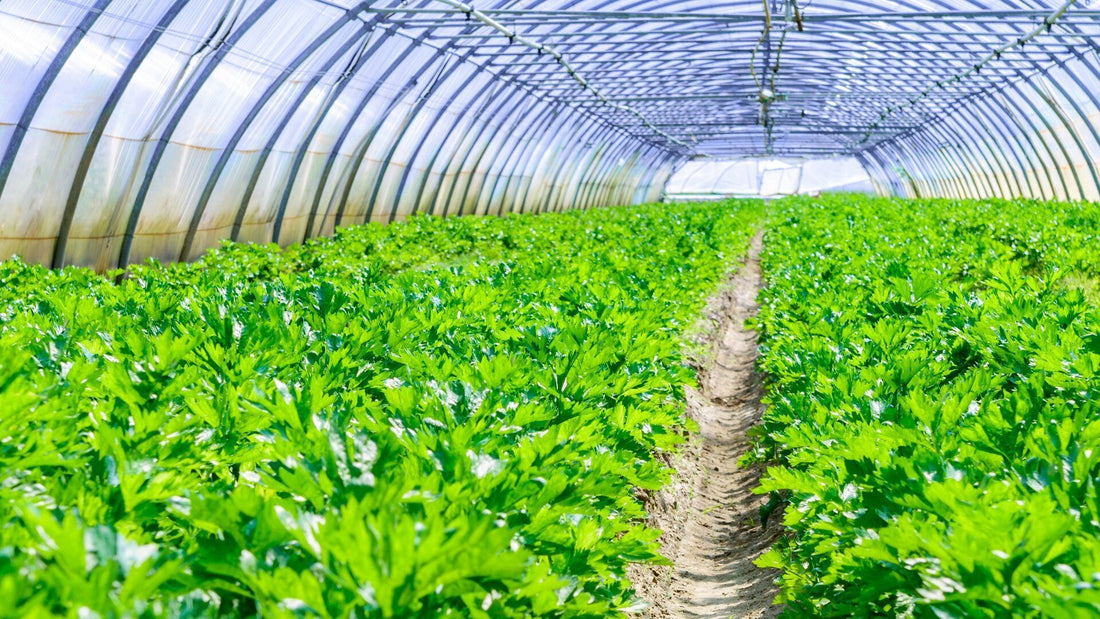
Are Greenhouses Really ‘Green’?
Share
The term ‘greenhouse effect’ no doubt came from the humble backyard greenhouse and means that due to climate change the entire earth is turning into a greenhouse and getting hotter. It also means that the climate is warming which is affecting the severity of storms and other natural weather events. It didn’t mean we should ban greenhouses or glasshouses or even hothouses to avert a future global disaster, but it’s understandable that people are now asking whether or not the huge commercial greenhouses in particular, but even the backyard ones, are having an impact on global warming.
The big commercial food producers and cut flower producers who grow their produce in huge glasshouses or greenhouses allow us to buy fruit, vegetables and blooms all year round - what would Valentine's Day be without massive bunches of red roses? All kinds of plants can be grown and thrive in these greenhouses and hothouses no matter what the weather brings, where the environment is warm and safe from pests and diseases. But what's good for the plants might not be so good for the planet and it turns out that it’s not the greenhouses themselves but the energy they use that is a problem.
Most of those Valentine's roses in America for instance, as well as other cut flowers, (the three most popular cut flowers worldwide are carnations, chrysanthemums and roses), are grown in Colombia in South America, which is near the Equator. You’d think being that close to the hottest zone in the world with plenty of sunlight and with everything just perfect for growing flowers they wouldn't need to grow them in greenhouses, but they do. It’s because in greenhouses the growers can regulate the amount of water the plants get, and the flowers are protected from infestations by pests and funguses.
The different types of greenhouses
Small backyard greenhouses: These are usually only a few metres square and are used to raise seedlings such as tomato, sweet peppers, and cucumber etc for planting in the home garden. The benefits are that the seedlings are raised in the greenhouse without the use of chemicals for fertilising or pest control so they get a strong start and grow into healthy plants. They then provide produce for the family. However, it’s the materials used in the construction of backyard greenhouses that is the concern. Ethically sourced renewable timbers can be used, but most backyard greenhouses are built with aluminium frames and the manufacture of aluminium uses a vast amount of energy, however, many aluminium makers worldwide use hydroelectric power rather than fossil fuels and some use solar.
Cold, warm and hothouses: Greenhouses are classified as warm, cold or hot with different requirements for each of the different varieties as far as energy is concerned. The cold house is the simplest since it uses only the heat from sunlight. Warm houses are heated only in the early and sometimes late stages of the seasons, year. There are different methods of heating a hothouse including electrical heaters, and oil burners (paraffin) both of which emit greenhouse gases such as carbon dioxide. However, carbon dioxide is essential for plant growth.
Polytunnel greenhouses: These are simple curved or hooped steel frames covered in polythene sheets and they’re one of the cheapest ways of erecting a greenhouse. They’re used widely for lengthening the growing period of many food crops and this type is rarely heated and have very little impact on the environment, made from recyclable materials.
Commercial glasshouses: The commercial glasshouses are just big greenhouses where food crops are grown on a large scale to be sold both in and out of season. Heating, watering and ventilation are all strictly controlled, more so than in polytunnels or other types of hot, cold or warm houses. The power used to ventilate, heat and water these crops adds to the greenhouse effect, but some believe this is offset by the amount of food they produce reliably.
Industrial Greenhouses: These are the mega giant greenhouses, known as ‘factory farms’ which give growers an ideal year-round ability to reliably grow food crops with factory precision. Tomatoes, for instance, can be grown and harvested year-round, temperatures and the atmosphere inside can be monitored via a computer, and artificial lights are used to promote growth. Carbon dioxide gas is pumped into the greenhouse to further aid the growth and health of the plants. Some consumers say the produce is tasteless. These mega greenhouses are initially very expensive to set up and are often built, near power plants to use up the waste energy. Some believe their environmental impact is offset by the production on a huge scale of food crops.
Different strokes for different folks in other countries
In other countries of the world where outdoor temperatures are extreme, greenhouses must be either heated or cooled, and one example of this is in the Netherlands. The sun in summer time raises temperatures inside the greenhouses so high that plants die unless the windows are opened, and this, of course, sends the energy literally out the window. In Northern European areas there is so little winter sunshine their greenhouses have to be heated by using growing lights, and they take a lot of energy.
The Dutch are working hard to green their greenhouses and until recently most efforts involved using thicker insulation and blocking out the sunshine during the heat of summer. But according to a 1Scientific American article, engineers from a Netherlands University have designed a prototype greenhouse that makes for an indoor environment which is ideal for the that country’s food crops and also saves energy.
So, from the humble backyard glasshouse to the industrial giants, greenhouses do have some impact on the environment but they are necessary for food crops, and scientists and engineers are working hard to keep their carbon footprint as low as possible in the future.
1https://www.scientificamerican.com/article/putting-the-green-into-greenhouses/
Author's Bio
Alex Morrison has been an avid digital marketer for over 10 years. In this time he has worked with a range of businesses giving him an in depth understanding of many different industries. As the owner of Integral Media he is now utilising his knowledge and experience with his rapidly increasing client portfolio to help them achieve their business goals.

We will only handle press inquiries. If you have questions regarding an order please contact our customer care. media@biotuff.com.au
In the spirit of reconciliation, Biotuff Australia acknowledges the Traditional Custodians of the country throughout Australia and their connections to land, sea and community.
We pay our respects to their elders past, present and emerging, and extend that respect to all Aboriginal and Torres Strait Islander peoples today and everyday.
